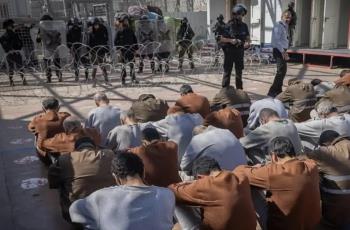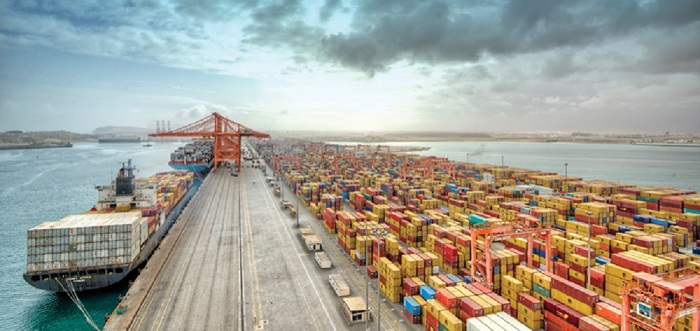Alwaght- The Persian Gulf monarchies invest heavily in sea infrastructures and ports, to an extent that they are now engaged in an extensive competition with each other.
Meanwhile, the proximity of the ports to each other and the planning for economic growth through marine trade bring Oman and the UAE, especially the northern emirates like Ajman, Umm Al-Quwain, Ras Al Khaima, and Fujairah, to a tight rivalry.
Oman, as a non-OPEC oil supplier, recently has intensified the competition with the UAE Port of Jabal Ali by increasing fuel supplies to the ships in its Sohar Port, Al-Quds Al-Arabi newspaper recently reported.
The place of port expansion in the Oman and UAE strategic and economic plans
In UAE's northern emirates and in Oman a wave of investments and projects to redraw the political, security, and symbolic outlook of this subregion where Africa, South Asia, and Southeast Asia meet has already started. Establishing free economic zones, urban development, logistics and maritime infrastructure, port development and tourism expansion are in full swing. As a result, the coasts of the Persian Gulf have become more strategic than before not only in terms of natural geographical location, like being home of Strait of Hormuz, Gulf of Oman, Arabian Sea, but also in terms of increasing geopolitical weight.
Focusing on port development is the mainstay of "vision" projects in these countries. The UAE Continental 2071 and Oman Vision 2040 for example are national programs tasked with changing the economic structure of these countries and paving the way for economic progress. Oman Vision 2040 aims to develop Oman's most strategic sectors, namely manufacturing, tourism, transportation and logistics, mining, and fisheries, all of which related to sea sector.
The transformation path taken by the UAE and Oman has structural economic reasons: First, both monarchies should find ways to reduce their dependence on oil to increase government revenues and create job opportunities, especially that coronavirus pandemic cut their foreign incomes. The northern emirates, meanwhile, push to use economic development levers to strengthen their political stance in the face of Abu Dhabi and Dubai to which they lost authority and leadership because of lack of oil and gas resources and also insufficient economic development.
On the other hand, two events in Oman helped accelerate the country's economic diversification strategy: Popular protests that took place in 2011 in many urban centers across the country like Sohar and Sur in the Al Batinah North province, Salaleh in the south of Dhofar, and also in the capital Muscat, and oil prices fall since 2914.
Second, in the UAE and in Oman, there is a direct relationship between marine trade and politics. Actually, the sea part of economic development has strengthened national identity in northern UAE and in Oman.
State transformation centered on the economy plays a subtle but powerful role in nation-building processes. In the northern emirates, post-1971 state-building was largely due to the monopoly of oil revenues in Abu Dhabi. This unequal relationship allowed Abu Dhabi to, in the light of financial leverage, monopolize the Bedouins' identity-centered narrative in the federation.
In Oman, too, the modern post-independence government has always strived to strike a balance between the coastal and inland people, and between the economy and the identity. The development of coastal areas in Oman can lead to the development of less privileged central and desert areas of the country through manpower employment, tourism boost, and transit network expansion.
Both countries' maritime strategies concentrate on western Indian Ocean islands, particularly Zanzibar and Seychelles. These regions are located at crossroads of Africa, Persian Gulf, and Asia.
From 2019 to 2021, the UAE chaired the Indian Ocean Rim Association, which mainly focuses on security and marine trade. In Zanzibar Archipelago, Oman has traditional influence and is a prominent actor. Historically speaking, the archipelago is part of Oman and even in 1832 Oman's capital was moved from Muscat to Zanzibar by Said bin Sultan.
But in recent years, the UAE, and especially Ras Al Khaima, has increased its economic presence in Zanzibar in covert competition with Oman. In November 2018, the Ras Al Khaimah government-owned gas company signed the first oil and gas sharing agreement with the semi-autonomous government of Zanzibar. The agreement was personally signed by Saud bin Saqr Al-Qasimi, the ruler of Ras Al Khaima, during his visit to Zanzibar. The UAE also opened a consulate in the archipelago, signaling plans to increase its influence there. In September 2019, Abu Dhabi Crown Prince Mohammed bin Zayed Al Nahyan hosted Zanzibar President Ali Mohammed Shin in Abu Dhabi, where they discussed trade, investment, and tourism.
To not fall behind, Oman cooperates with China in Tanzania, parent country of Zanzibar now. The two countries are in joint venture to build a multi-billion port funded by Exim Bank of China and Oman Sovereign Wealth Fund.
Just unlike their relations with Zanzibar, Oman and the UAE have no historical bonds to Seychelles. Still, Seychelles strategic location position can play a crucial role in trade and military influence of the Persian Gulf monarchies in East Africa.
Seychelles is the smallest country on the African continent with Victoria as its capital. It is the only African country with a very high human development index. Seychelles is an archipelago of 115 islands, about 1,500 kilometers from the African continent.
With Seychelles ruling party's new policy being openness to foreign presence in the local economy, late Sultan Qaboos of Oman aspired to expand tourism relations with the archipelago. A MoU on tourism signed in 2002 was extended in 2013.
In recent years, the UAE has also developed economic and security relations with Seychelles. In 2011, the UAE provided funding for construction of Seychelles coast guard building, and in 2015 Seychelles signed visa-free travel agreement with the UAE. In 2016, Seychelles President Danny Faure visited Abu Dhabi and Dubai to sign agreements on renewable energy cooperation. In 2018, the first meeting of the Joint Cooperation Committee was held in Abu Dhabi, and an agreement was also reached on strengthening security, infrastructure, and transportation relations.
Vying for foreign investment
While the UAE since 2018 launched tourism attraction campaigns, Oman is expanding foreign agreements to improve "Made in Oman" goods. In early 2019, the Oman Industrial Parks Authority signed an agreement with China's ministry of commerce to facilitate participation of Chinese investors in Omani home and international exhibits. The Omanis hope that in the long run, industry-based trade can build closer cooperation in sensitive areas such as the defense industry, logistics and military facilities with China.
China has become Oman's largest trade partner and a major importer of its crude oil. In 2017, the Asian Investment Bank of China agreed to provide Oman about $300 million in loans to develop the country's infrastructure, and in the same year, Beijing covered Muscat budget deficit with a $3.55 billion loan.
In the UAE, on the other side, the developing ports in Ras Al Khaima, Ajman, Umm Al-Quwain are operated by Hutchinson Ports, a Hong Kong-based company. In 2017, Hutchinson Ports won a contract to operate Saqr Port in Ras Al Khaima, Ahmad bin Rashed Al Maktoum Port in Umm Al-Quwain, and Ajman Port for 25 years.
In 2019, Ras Al Khaimah Ports participated in the 6th China Silk Road International Logistics Expo and signed a MoU with the Port of Guangzhou to establish formal trade relations. In 2019, the Ajman Free Zone supported the fifth UAE-India joint economic forum. To not fall behind in the race, Oman signed investment agreements with India in addition to China.
Oman's Asyad Group, a logistics service company, is set to launch a study determining conditions for commercializing the small and mid-size ports of the country with trade and tourism visions. These ports are in Dabah in Musandam, Liwa and Khaburah in Batinah North , Masnaah in Batinah South, Sur in Eastern Province, Mahout in Al Wasta, Shuwaymiyah, Sadah, and Merbat in Dhofar, and the strategic island of Masirah which is planned to be transformed into a multi-purpose port, for fishing, trade, and tourism.
Growing competition over transportation, oil storage
Al Fujairah (UAE) and Duqm (Oman) ports both are expanding their transfer and storage capacities along western Indian Ocean as part of the free zones. Gwadar port of Pakistan, however, is a rival to Duqm, Salaleh, and Al Fujairah ports. Still, Chinese leading role in expansion of the Omani and Pakistani port infrastructure may create links between Duqm and Gwadar.
Al Fujairah is located in a sensitive side of Strait of Hormuz. Hasan-Fujairah pipeline is the only oil carrying pipe transfering Abu Dhabi oil off Hormuz and thus is the UAE's security cornerstone. Al Fujairah bunkering operations have been increasing globally, in competition to Duqm.
Additionally, Abu Dhabi National Oil Company (ADNOC) signed in 2019 a deal with South Korea Engineering and Construction (SKEC) to build new oil storage facilities near Al Fujairah.
On the Omani side, Muscat is expanding Sohar Port and Free Zone hosting container, food, and chemicals ships of the Arabian Peninsula. By expanding fueling services to docking ships, Sohar can grab the bunkering business and service from Jabal Ali port for its better position on the rim of Indian Ocean.



























